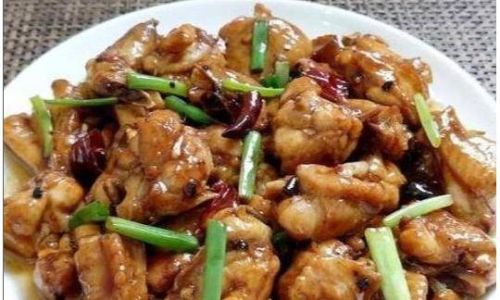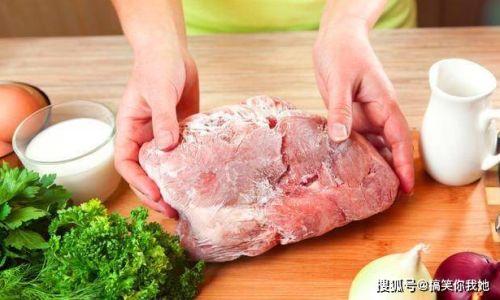Introduction
Spicy stir-fried chicken chunks, a beloved dish in many Asian cuisines, has captivated taste buds worldwide with its bold flavors and tantalizing heat. This recipe combines tender chicken, aromatic spices, and fresh vegetables in a harmonious dance of textures and tastes. Whether you’re a seasoned home cook or a curious novice, mastering this dish opens doors to a world of culinary creativity. Beyond its irresistible taste, this recipe offers flexibility—adjust the spice level, swap proteins, or experiment with vegetables to suit your palate. In this comprehensive guide, we’ll explore the history of this dish, break down each ingredient’s role, and provide step-by-step instructions to ensure perfection. By the end, you’ll not only know how to cook spicy stir-fried chicken chunks but also understand the science and art behind its magic.

The Origins and Cultural Significance
Stir-frying, a cornerstone of Chinese cooking, dates back over 1,500 years. Born out of necessity—quick cooking over high heat to preserve ingredients’ freshness—this technique became a hallmark of regional cuisines. Spicy stir-fried chicken chunks, in particular, draws inspiration from Sichuan province, where fiery dishes like kung pao chicken reign supreme. Sichuan cuisine is renowned for its málà flavor profile—a numbing heat from Sichuan peppercorns paired with chili’s intensity. While our recipe leans into this tradition, it’s adaptable to global palates, making it a universal crowd-pleaser.
Ingredients: Building Blocks of Flavor
Creating the perfect spicy stir-fried chicken chunks begins with selecting quality ingredients. Each component plays a pivotal role:
- Protein: Boneless, skinless chicken thighs (500g) are ideal for their moisture retention and rich flavor. Breast meat works but may dry out if overcooked.
- Aromatics: Fresh garlic (4 cloves), ginger (1-inch piece), and green onions (3 stalks) form the dish’s fragrant base.
- Vegetables: Bell peppers (1 red, 1 green), onions (1 medium), and carrots (1 medium) add color, crunch, and sweetness.
- Sauce: A blend of soy sauce (3 tbsp), oyster sauce (2 tbsp), rice vinegar (1 tbsp), and chili paste (2 tbsp) creates the signature umami-spicy profile.
- Thickener: Cornstarch (1 tbsp) ensures the sauce clings to the chicken and vegetables.
- Oil: Neutral oil (e.g., vegetable or peanut) with a high smoke point (3 tbsp) is essential for stir-frying.
- Garnishes: Toasted sesame seeds and fresh cilantro leaves elevate presentation and add texture.
Preparation: The Key to Success
-
Marinating the Chicken:
- Cut chicken into bite-sized chunks (2x2cm). Smaller pieces cook faster and absorb more flavor.
- In a bowl, combine chicken with 1 tbsp soy sauce, 1 tbsp cornstarch, and 1 tsp sesame oil. Marinate for 20–30 minutes. Cornstarch creates a protective coating, sealing in juices during cooking.
-
Prepping Vegetables and Aromatics:
- Mince garlic and ginger finely; they’ll melt into the sauce, infusing every bite.
- Slice bell peppers and onions into uniform strips for even cooking.
- Julienne carrots into matchsticks for a crisp texture.
-
Sauce Mixture:
Whisk remaining soy sauce, oyster sauce, rice vinegar, chili paste, 1 tsp sugar, and 1 tsp cornstarch in a small bowl. Sugar balances the heat and acidity.
Cooking Process: Mastering the Stir-Fry
Stir-frying is a high-heat, rapid-cooking method requiring focus and timing. Follow these steps for restaurant-quality results:
-
Heat the Wok:

- Place a carbon-steel wok or large skillet over high heat. Allow it to smoke lightly—this ensures proper searing.
- Add 1 tbsp oil, swirling to coat the surface.
-
Sear the Chicken:
- Add marinated chicken in a single layer. Avoid overcrowding; cook in batches if needed.
- Let the chicken sear undisturbed for 2 minutes to develop a golden crust. Stir-fry for 3–4 minutes until cooked through. Remove and set aside.
-
Sauté Aromatics:
Reduce heat to medium. Add remaining oil, garlic, and ginger. Stir-fry for 30 seconds until fragrant but not browned.
-
Cook Vegetables:
Toss in onions and carrots. Stir-fry for 2 minutes, then add bell peppers. Cook until crisp-tender (3–4 minutes). Overcooking vegetables leads to mushiness.
-
Reintroduce Chicken and Sauce:
Return chicken to the wok. Pour in the sauce mixture, stirring vigorously to coat everything. The cornstarch will thicken the sauce within 1–2 minutes.
-
Final Touches:
- Add half the green onions, reserving the rest for garnish. Toss to combine.
- Remove from heat immediately to prevent overcooking. The residual heat will finish cooking the vegetables.
Serving Suggestions: Elevating the Dish
Spicy stir-fried chicken chunks shines when paired with complementary sides:

- Steamed Jasmine Rice: The fluffy grains absorb the sauce beautifully.
- Fried Rice: For a heartier meal, mix leftovers into day-old rice.
- Noodles: Serve over udon or soba noodles for a satisfying twist.
- Fresh Herbs: A sprinkle of cilantro or basil adds a bright contrast.
- Pickled Vegetables: A side of quick-pickled cucumbers or radishes cuts through the heat.
Variations and Customizations
- Protein Swaps: Use shrimp, beef, or tofu for vegetarian versions. Adjust cooking times accordingly.
- Spice Level: Reduce chili paste for mild heat or add fresh bird’s-eye chilies for extra fire.
- Vegetable Medley: Experiment with broccoli, snap peas, or mushrooms.
- Nutty Crunch: Add roasted peanuts or cashews during the final toss.
- Gluten-Free: Substitute tamari for soy sauce and ensure oyster sauce is gluten-free.
Troubleshooting Common Issues
- Soggy Chicken: Overcrowding the pan causes steaming instead of searing. Cook in batches.
- Bland Flavor: Ensure the sauce is well-seasoned and the chicken is adequately marinated.
- Burnt Garlic: Add aromatics after reducing heat to prevent scorching.
- Watery Sauce: Thicken with a cornstarch slurry (1 tsp cornstarch + 1 tbsp water) if needed.
Health Benefits and Nutritional Notes
While this dish is indulgent, it offers nutritional value:
- Protein: Chicken provides essential amino acids for muscle repair.
- Vitamins: Bell peppers are rich in vitamin C; carrots offer beta-carotene.
- Antioxidants: Garlic and ginger contain compounds linked to reduced inflammation.
- Low-Carb Option: Serve over cauliflower rice for a keto-friendly meal.
The Science Behind Stir-Frying
Stir-frying at high temperatures (350–400°F/175–200°C) triggers the Maillard reaction, creating complex flavors and caramelized textures. The rapid cooking preserves nutrients in vegetables and ensures chicken remains juicy. Cornstarch in the marinade and sauce acts as a tenderizer and thickener, while the wok’s shape distributes heat evenly.
Cultural Adaptations Around the World
- Thai Twist: Add fish sauce, lime juice, and basil for a pad gra prow vibe.
- Korean Fusion: Incorporate gochujang and kimchi for a spicy-fermented kick.
- Mexican-Inspired: Swap soy sauce for lime juice and add cumin; serve with tortillas.
Conclusion: A Dish That Transcends Borders
Spicy stir-fried chicken chunks is more than a recipe—it’s a canvas for culinary expression. Whether you’re craving the comfort of a familiar classic or the thrill of experimentation, this dish adapts effortlessly. By mastering the balance of heat, sweetness, and umami, you’ll create meals that delight and unite. So grab your wok, ignite your stove, and let the sizzle of stir-frying transport you to a world where every bite is a celebration of flavor.
Final Tips for Perfection
- Use a wok if possible; its sloped sides make stir-frying effortless.
- Prep all ingredients before cooking—stir-frying is a fast-paced dance.
- Taste and adjust seasoning at the end; sauces reduce and intensify.
- Invest in a high-quality chili paste—it’s the dish’s backbone.
With practice, you’ll refine your technique, turning out plates that rival your favorite restaurant. Bon appétit!






0 comments